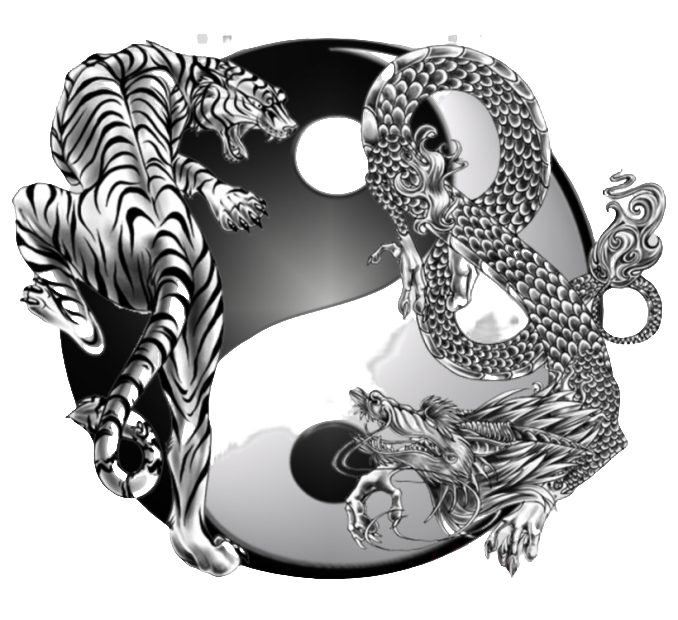Wing Chun Philosophy: Understanding the Yin and Yang Principles
By Maurice Novoa a master under the Yuen Kay Shan, Ip Man and Pan Nam lineages.
Introduction:
Wing Chun, a Chinese martial art renowned for its practicality and efficiency, is not only a physical discipline but also a philosophy rooted in the principles of Yin and Yang. These principles form the foundation of Wing Chun’s approach to combat, strategy, and personal growth. In this article, we will delve into the philosophy of Wing Chun, exploring the concepts of Yin and Yang and their significance in the practice of this martial art.
I. The Concept of Yin and Yang:
a. Origin and Symbolism:
Yin and Yang are fundamental concepts in Chinese philosophy that represent the dualistic nature of the universe. Yin symbolizes qualities such as darkness, passivity, and yielding, while Yang represents light, activity, and assertiveness. The interplay between Yin and Yang is believed to be the driving force behind all natural phenomena, including human behavior and martial arts.
b. Balance and Harmony:
In Wing Chun, the philosophy of Yin and Yang emphasizes the importance of achieving balance and harmony in both physical and mental aspects. It is the integration of Yin and Yang qualities that enables practitioners to respond effectively to various situations and opponents. By understanding and embodying the principles of Yin and Yang, Wing Chun practitioners strive to achieve a state of equilibrium in their techniques, strategies, and personal growth.
II. Yin and Yang in Wing Chun Techniques:
a. Centerline Control:
One of the fundamental principles of Wing Chun is centerline control, which embodies the concept of Yin and Yang. The centerline represents the core of an individual’s structure and serves as a vital reference point in combat. By maintaining a balanced and centered position, practitioners can effectively utilize both Yin and Yang qualities to simultaneously attack and defend, exploiting their opponent’s weaknesses while protecting their own vulnerabilities.
b. Simultaneous Attack and Defense:
The principle of simultaneous attack and defense in Wing Chun exemplifies the harmonious integration of Yin and Yang. By executing techniques that simultaneously block and strike, practitioners maintain a constant flow of energy, seamlessly transitioning between defensive and offensive actions. This approach allows for efficient and fluid movements, enabling practitioners to maintain control and overwhelm their opponents.
III. Yin and Yang in Wing Chun Strategy:
a. Adaptability and Flexibility:
The philosophy of Yin and Yang encourages practitioners to be adaptable and flexible in their strategies. By understanding the ebb and flow of combat, practitioners can adjust their techniques and responses accordingly. This flexibility enables practitioners to harmonize with their opponent’s energy and exploit the gaps in their defenses, ultimately achieving victory through efficient use of Yin and Yang principles.
b. Timing and Distancing:
Another aspect of Wing Chun strategy influenced by Yin and Yang is the emphasis on timing and distancing. By understanding the dynamic interplay between Yin and Yang energies, practitioners can gauge the optimal moment to launch an attack or execute a defensive maneuver. Proper timing and distancing allow practitioners to effectively control the flow of a confrontation, capitalizing on the weaknesses of their opponents while maintaining their own safety.
IV. Yin and Yang in Personal Growth:
a. Balancing Internal and External Training:
Wing Chun philosophy extends beyond physical techniques and strategy. It also emphasizes the cultivation of internal qualities, such as mindfulness, self-awareness, and emotional balance. By balancing internal and external training, practitioners aim to harmonize Yin and Yang aspects within themselves, developing a holistic approach to martial arts and personal growth.
b. Continual Learning and Evolution:
The philosophy of Yin and Yang encourages practitioners to embrace the concept of continual learning and evolution. By recognizing that change is an inherent part of life, Wing Chun practitioners strive to adapt and grow, expanding their knowledge, skills, and understanding of the art. This pursuit of constant improvement aligns with the principles of Yin and Yang, as practitioners seek to balance and refine their abilities over time.
Conclusion:
The philosophy of Yin and Yang lies at the heart of Wing Chun, influencing every aspect of the martial art, from techniques and strategies to personal growth and development. By embracing the principles of balance, harmony, adaptability, and continual learning, Wing Chun practitioners can unlock the full potential of the art and cultivate a deep understanding of themselves and the world around them. The philosophy of Yin and Yang serves as a guiding principle, reminding practitioners to strive for equilibrium in their actions, both on and off the training floor, and ultimately contributing to their mastery of Wing Chun.

